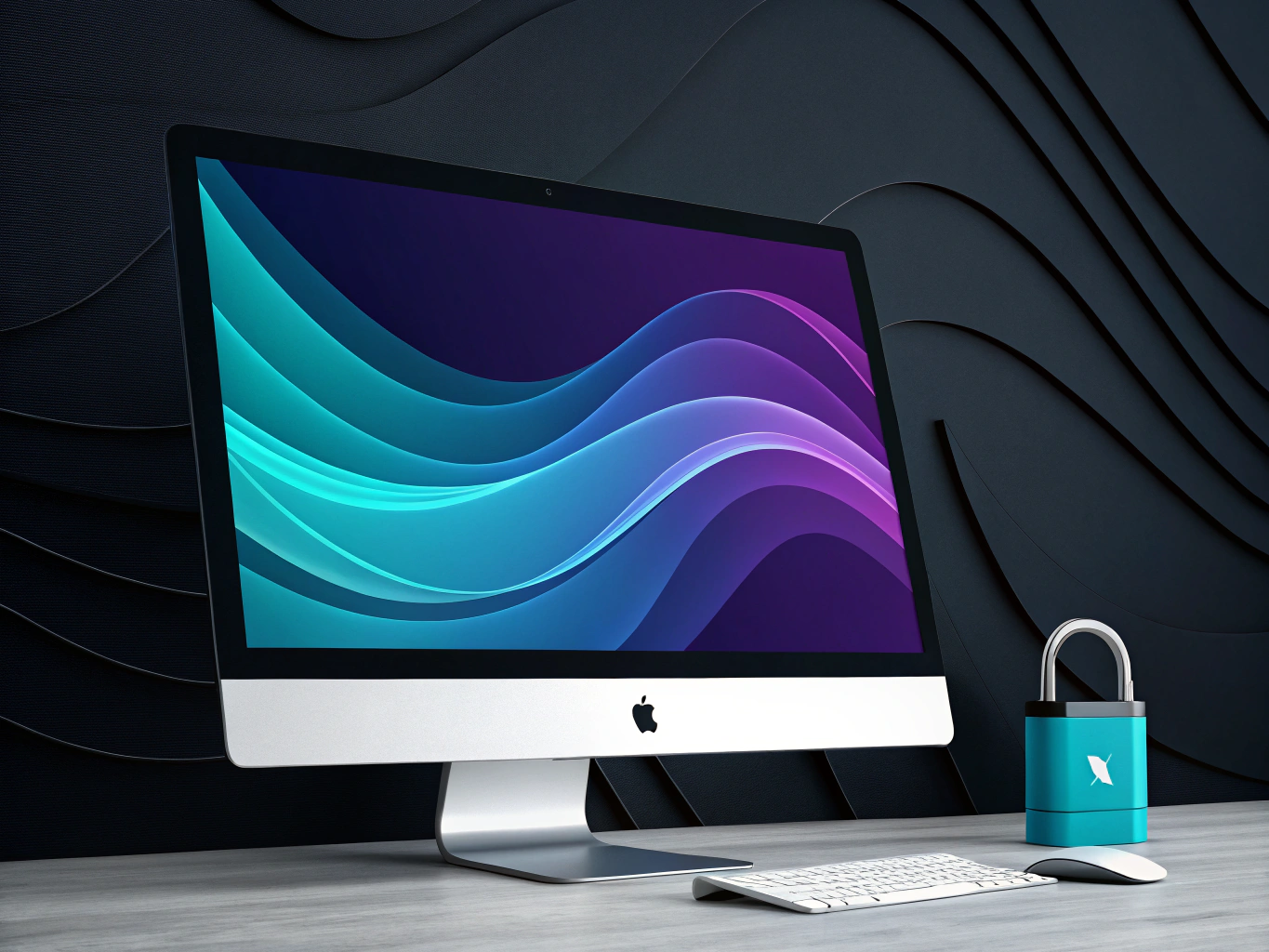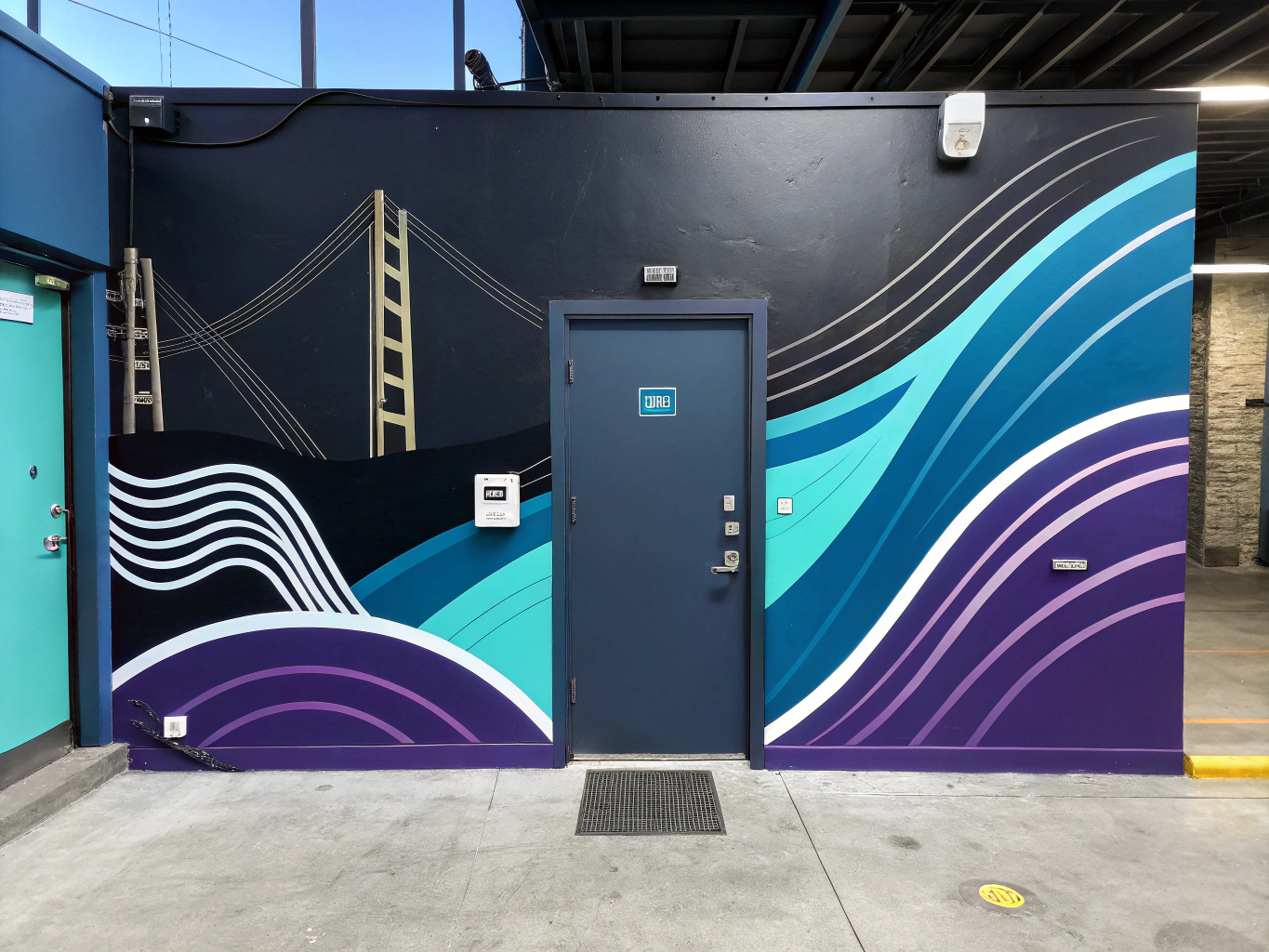Let’s talk about the elephant in the creative room: Adobe’s subscription model. Remember when you could just buy Photoshop once and own it forever? Those days feel like ancient history, kind of like when we used to rent movies from Blockbuster.

I’ve spent the last decade watching Adobe transform from the creative professional’s best friend to that expensive gym membership you feel guilty about keeping. And just like that gym membership, the costs keep climbing while our usage patterns haven’t changed much.
Here’s the thing – Adobe’s Creative Cloud isn’t just expensive; it’s become a complex web of subscriptions, features, and limitations that’s frankly giving many of us subscription fatigue. When you’re paying $54.99 monthly for the full suite (or $82.49 if you’re paying monthly instead of annually), it’s natural to wonder if there are adobe alternatives that won’t drain your creative budget.
Understanding the Adobe Alternative Landscape

Before we dive into specific adobe alternatives, let’s break down what we’re actually looking for. It’s like dating apps – you need to know what you want before you start swiping right on every free photo editor that comes your way.
The Four Flavors of Adobe Alternatives
1. Free and Open-Source Solutions (✨): Think of these as the community gardens of creative software, offering features that often rival a free Canva alternative for graphic design tasks. They’re maintained by passionate developers, constantly evolving, and completely free. The catch? Sometimes you need to bring your own gardening tools (aka technical know-how).
2. Free Tools (⭐️): These are like those sample stations at Costco – great for a taste, but you might want more if you’re planning a full meal. Perfect for occasional users or those just starting out. Check out free graphic design software for some great options.
3. One-Time Purchase Options (💵): The “buy it and forget it” crowd’s favorite. You pay once, own forever, and don’t have to worry about subscription renewal emails giving you mini heart attacks every month.
4. Subscription-Based Alternatives (🔒): Yes, I know what you’re thinking – “Aren’t we trying to avoid subscriptions?” But hear me out. Some alternatives offer subscriptions at a fraction of Adobe’s cost, with features that might actually make more sense for your workflow.
The Real Cost of Sticking with Adobe
Let’s do some math that’ll make your accountant sweat. A full Creative Cloud subscription costs around $660 annually if you’re paying yearly, or nearly $1,000 if you’re going month-to-month. That’s enough to buy a decent laptop, fund a small marketing campaign, or treat your entire team to a very nice dinner.
But it’s not just about the money. Adobe’s recent policy changes have raised eyebrows across the creative community. Their AI-generated content terms, data collection practices, and cloud storage limitations have many of us questioning whether we’re in a healthy long-term relationship with our creative software.
The Hidden Costs Nobody Talks About
When searching for an adobe acrobat alternative or alternatives to adobe in general, consider these often-overlooked factors:
- Storage limitations and extra costs for cloud features
- Training time needed to keep up with constant UI changes
- The mental overhead of managing multiple subscriptions
- Project compatibility issues when collaborating with others
And let’s not forget about the adobe reader alternative seekers – even something as simple as PDF handling has become unnecessarily complicated and expensive. Whether you’re looking for an adobe acrobat pro alternative or just a simple adobe pdf alternative, the market has evolved to offer solutions that might actually work better for your specific needs.
The reality is, we’re living in a post-Adobe-monopoly world, where even those engaged in online arbitrage can find creative tools tailored to their specific needs. The question isn’t whether there are viable alternatives – it’s which ones make the most sense for your creative workflow. And trust me, as someone who’s tested pretty much every adobe acrobat alternative free option out there (and paid ones too), I can tell you the alternatives landscape is more exciting than ever.
Free and Open-Source Adobe Alternatives: A Deep Dive

Let’s be real – Adobe’s subscription model is like that friend who keeps “borrowing” money and never paying it back. It just keeps taking, month after month. But here’s the thing: the creative world didn’t start with Adobe, and it certainly won’t end with it.
I’ve spent years watching frustrated designers and content creators search for adobe alternatives, particularly after Adobe’s recent policy changes that left many feeling, well, less than enthusiastic about their relationship with the Creative Suite. The good news? There’s a whole universe of tools out there that won’t drain your bank account.
The Open-Source Revolution
Remember when open-source software was considered the “cheap knockoff” of professional tools? Those days are long gone. Tools like GIMP and Inkscape have evolved into serious adobe alternatives that can handle professional-grade work. Think of them as the indie bands of the software world – they might not have the massive marketing budget, but they’ve got soul.
Design and Illustration Tools That Actually Work
Let’s start with the heavy hitters.
Inkscape
If you’re looking for an adobe alternative for illustration work, Inkscape is your new best friend. It’s like Illustrator’s cool cousin who went to art school and decided to give away their work for free. The vector capabilities are impressive, and while the interface might take some getting used to (don’t they all?), it handles professional work like a champ.
GIMP
For photo editing, GIMP remains the go-to adobe acrobat alternative free option. Yes, the learning curve can feel like climbing Mount Everest in flip-flops, but once you get the hang of it, you’ll wonder why you ever needed Photoshop.
Photopea
And for those who need a more familiar interface, Photopea is basically Photoshop’s web-based doppelganger.
Discovering the best design tools for your needs can open up a world of creative possibilities.
Professional-Grade Alternatives That Won’t Break the Bank
Here’s where things get interesting. DaVinci Resolve is not just an alternative to adobe – it’s arguably better for video editing than Premiere Pro in many ways. The free version offers more features than some paid competitors, and the color grading tools are industry-standard. That’s like getting a Ferrari for the price of a bicycle.
Looking for an adobe reader alternative? PDFgear has emerged as a solid contender, offering most of the functionality you’d find in Acrobat without the monthly subscription drama. It’s like finding out your favorite coffee shop has a secret menu with better prices.
The Rise of Web-Based Solutions
The best adobe acrobat alternative might not be a traditional desktop app at all. Web-based tools have come into their own, offering flexibility and collaboration features that traditional software can’t match. Figma, for instance, has completely revolutionized UI/UX design workflows, making Adobe XD feel like yesterday’s news.
And let’s talk about Canva – while it’s not a direct alternative to adobe acrobat pro, it’s become the Swiss Army knife of graphic design tools, making it a tough alternative to Canva for those seeking free, versatile design solutions. It’s democratized design in a way that Adobe never quite managed, making it possible for anyone to create professional-looking content without a degree in graphic design.
Mobile Creative Solutions
The mobile creative space is where things get really interesting. Apps like ibisPaint are pushing the boundaries of what’s possible on a tablet, offering alternatives to adobe flash player that actually make sense in today’s world. These tools aren’t just scaled-down versions of desktop apps – they’re built from the ground up for touch interfaces and mobile workflows.
What’s particularly exciting is how these mobile tools integrate with desktop workflows. You’re no longer tied to a single ecosystem or platform. It’s like having a creative studio in your pocket that can talk to all your other tools without throwing a fit.
Making the Switch: It’s Not as Scary as You Think

Look, I get it. Switching from Adobe feels like trying to replace your favorite pair of shoes – you know, the ones that are falling apart but just feel right. But here’s the thing: with Adobe’s recent policy changes and that ever-increasing subscription fee eating into your profits, it’s time to seriously consider those Adobe alternatives we’ve been talking about.
Let me share something from my own experience running ProductScope AI: when we first started, we actually tried to stick with Adobe for all our design needs. The familiarity was comforting. But that comfort was costing us nearly $600 annually per team member. That’s when we decided to experiment with alternatives – and honestly? The transition wasn’t nearly as painful as we’d feared.
The Migration Roadmap: Your 30-Day Transition Plan
Here’s a practical roadmap that won’t leave you pulling your hair out:
- Week 1: Install your chosen Adobe alternatives alongside Adobe (yes, run them parallel)
- Week 2: Start using the alternatives for new projects while finishing existing ones in Adobe
- Week 3: Convert your essential files and templates to compatible formats
- Week 4: Make the full switch and cancel that Adobe subscription
Future-Proofing Your Creative Workflow
The landscape of Adobe alternatives isn’t static – it’s evolving faster than my coffee addiction (and that’s saying something). We’re seeing AI integration becoming standard in tools like Canva and Figma, making them increasingly powerful Adobe alternatives. The best part? Many of these tools are taking a more human-centered approach to AI integration, focusing on augmenting creativity rather than replacing it.
The Real Cost Analysis
Let’s talk numbers – because that’s what your accountant cares about. A typical Adobe Creative Cloud subscription runs about $54.99/month for individuals. Over five years, that’s $3,299.40. Compare that to Affinity’s one-time purchase model ($169.99 for their entire suite) or free alternatives like GIMP and Inkscape, and the math starts looking pretty interesting, doesn’t it?
Making Your Final Decision
Here’s the thing about choosing Adobe alternatives – it’s not about finding exact replicas. It’s about finding tools that help you achieve your creative goals, perhaps in slightly different ways. Think of it like switching from an iPhone to Android – different interface, same core functionality.
Recommended Combinations Based on Your Needs
For the solo content creator:
– Photopea (free) for image editing
– Canva (free tier) for quick designs
– PDFgear for document management
– DaVinci Resolve (free) for video editing
For small design studios:
– Affinity Suite ($169.99 one-time)
– Figma (free tier) for UI/UX
– Foxit PDF Editor for document work
– Scribus (free) for publishing
Final Thoughts: The Future of Creative Tools
The creative software industry is experiencing its own renaissance, much like what we’re seeing with AI tools. The monopoly of Adobe alternatives is being challenged by innovative newcomers who understand that creatives need flexibility, affordability, and freedom from vendor lock-in.
Remember when we thought Adobe Flash Player was irreplaceable? Yeah, that aged well. The truth is, the best Adobe alternative isn’t just one tool – it’s a carefully curated toolkit that matches your specific needs. Whether you’re a graphic design Reddit enthusiast looking for open-source alternatives to Adobe Flash Player, or a professional seeking an Adobe Acrobat alternative free from subscription fees, there’s never been a better time to make the switch.
And here’s my prediction: within the next few years, we’ll see even more AI-powered creative tools emerge that will make Adobe’s current offerings look like MS Paint. The future of creative software isn’t about being locked into one ecosystem – it’s about having the freedom to choose tools that work for you.
So, ready to break free from that Adobe subscription? The alternatives are waiting, and they’re more capable than ever. Just remember: the perfect toolkit is the one that helps you create without getting in your way – whether that’s Adobe or not.
👉👉 Create Photos, Videos & Optimized Content in minutes 👈👈
Related Articles:
- Why You Should Consider JPEG Alternatives
- Best AI Image Generator of 2024: Top Tools for Stunning Visuals
- How to Convert HEIC to JPG: Best Tools to Use – ProductScope AI
Frequently Asked Questions
Can you suggest another free alternative to Adobe acrobat?
One popular free alternative to Adobe Acrobat is PDF-XChange Editor, which offers a variety of features for viewing, editing, and annotating PDF documents. Another great option is Foxit Reader, which provides a lightweight and user-friendly interface for basic PDF viewing and editing tasks, along with some advanced features like form filling and signing.
What communities are there for graphic design in Reddit?
Reddit hosts several vibrant communities for graphic designers, such as r/graphic_design and r/design. These subreddits provide a platform for designers to share their work, seek feedback, discuss industry trends, and find inspiration from peers around the world.
Are there alternatives to Adobe flash player?
Yes, there are several alternatives to Adobe Flash Player, with one of the most prominent being HTML5, which is widely supported across modern web browsers and offers superior security and performance. Additionally, other technologies like WebGL and Unity are used for rendering interactive multimedia content on the web.
What alternatives are there to Adobe flash player?
Alternatives to Adobe Flash Player include HTML5, which has become the standard for multimedia content on the web due to its versatility and security. Other technologies such as WebAssembly and JavaScript libraries like Phaser are also used to create rich interactive experiences without the need for Flash.
What are alternatives to Adobe photoshop on a pc for rectifying (squaring) lines of interior photos?
GIMP is a powerful, free alternative to Adobe Photoshop that allows for precise photo editing, including rectifying lines in interior photos using its transformation tools. Another option is Affinity Photo, which offers professional-grade features like perspective correction and is available at a one-time purchase cost, making it ideal for photographers looking to adjust their images.
About the Author
Vijay Jacob is the founder and chief contributing writer for ProductScope AI focused on storytelling in AI and tech. You can follow him on X and LinkedIn, and ProductScope AI on X and on LinkedIn.
We’re also building a powerful AI Studio for Brands & Creators to sell smarter and faster with AI. With PS Studio you can generate AI Images, AI Videos, Chat and Automate repeat writing with AI Agents that can produce content in your voice and tone all in one place. If you sell on Amazon you can even optimize your Amazon Product Listings or get unique customer insights with PS Optimize.
🎁 Limited time Bonus: I put together an exclusive welcome gift called the “Formula,” which includes all of my free checklists (from SEO to Image Design to content creation at scale), including the top AI agents, and ways to scale your brand & content strategy today. Sign up free to get 200 PS Studio credits on us, and as a bonus, you will receive the “formula” via email as a thank you for your time.
